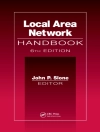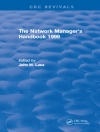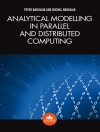Semantic Grid: Model, Methodology, and Applications introduces to the science, core technologies, and killer applications. First, scientific issues of semantic grid systems are covered, followed by two basic technical issues, data-level semantic mapping, and service-level semantic interoperating. Two killer applications are then introduced to show how to build a semantic grid for specific application domains. Although this book is organized in a step by step manner, each chapter is independent. Detailed application scenarios are also presented. In 1990, Prof. Wu invented the first KB-system tool, ZIPE, based on C on a SUN platform. He proposed the first coupling knowledge representing model, Couplingua, which embodies Rule, Frame, Semantic Network and Nerve Cell Network, and supports symbol computing and data processing computing. His current focus is on semantic web, grid & ubiquitous computing, and their applications in the life sciences.
विषयसूची
Knowledge Representation for the Semantic Grid.- Dynamic Problem Solving in the Semantic Grid.- Trust Computing in the Semantic Grid.- Data Integration in the Semantic Grid.- Service Flow Management in the Semantic Grid.- Data Mining and Knowledge Discovery in the Semantic Grid.- Dart Grid: A Semantic Grid Implementation.- Semantic Grid Applications for Traditional Chinese Medicine.- Semantic Grid Applications in Intelligent Transportation Systems.
लेखक के बारे में
Prof. Wu’s major research areas include distributed artificial intelligence, knowledge-based system, grid computing, semantic web, and ubiquitous computing. He invented the first KB-system tool, ZIPE, based on the C programming language on a SUN platform in China, 1990. He proposed the first coupling knowledge representing model, Couplingua, which embodies Rule, Frame, Semantic Network and Nerve Cell Network and supports symbol computing and traditional data processing computing. During the past few years, his work is mainly focused on semantic web, grid computing, ubiquitous computing and their applications in the life sciences (especially for Traditional Chinese Medicine) and ITS (Intelligent Transportation System). He is the leader of the project Dart Grid, a semantic grid toolkit for data integration, which has been used to help build the largest TCM data grid in the world. In year 2005, he was awarded as one of the Outstanding Young Scientists by China National Science Foundation.












